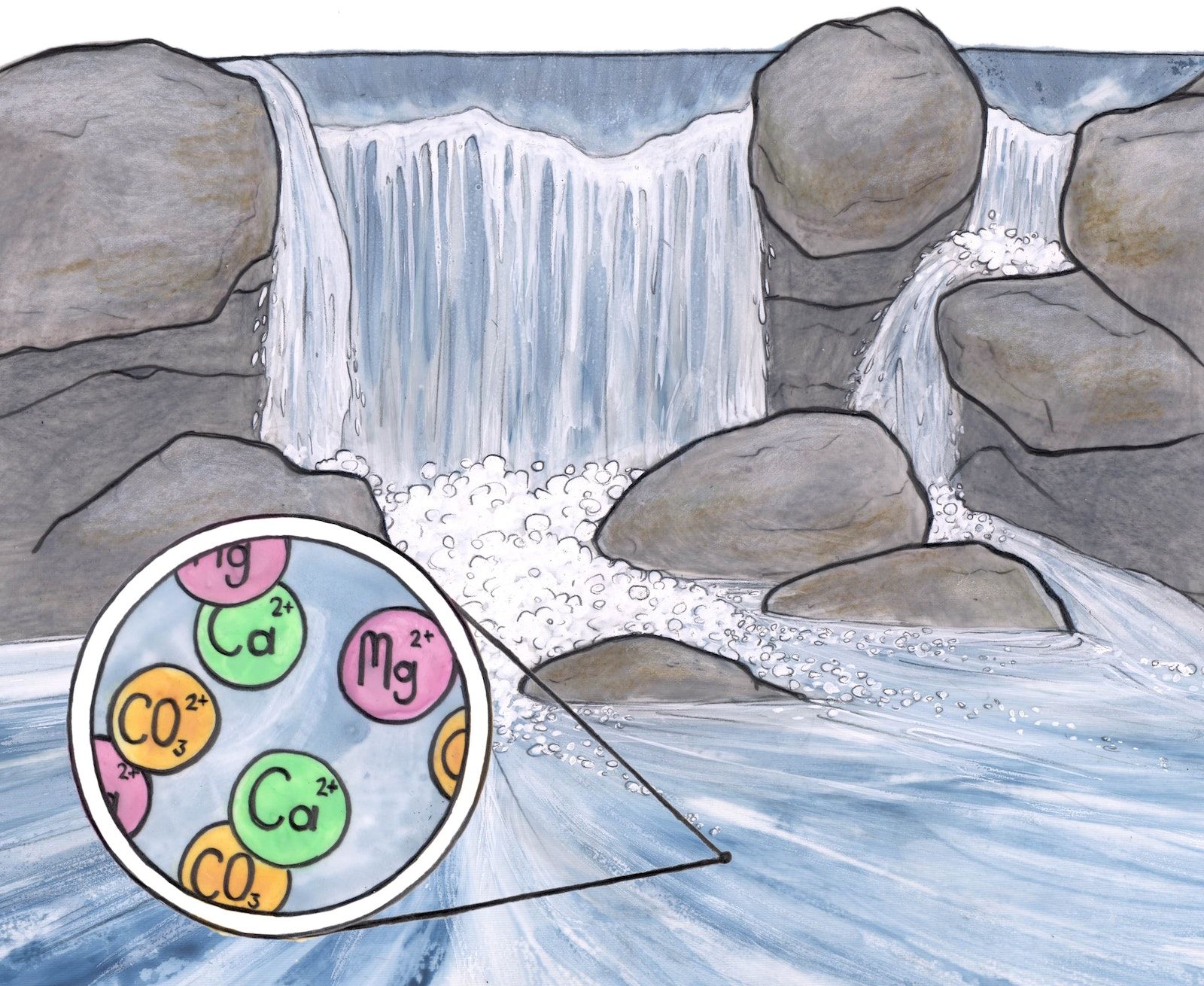What is it?
Hardness is a measure of dissolved minerals in water – primarily calcium and magnesium. The types of rocks (and the minerals they contain) in an area will influence the hardness of the water. For example, limestone is rich in calcium and is easily eroded by water.
Other types of rocks do not contain as much magnesium or calcium, and do not erode as easily. Lake and river water in these areas would most likely have low hardness and would be considered “soft”.

The hardness of water in lakes and rivers is heavily influenced by the geology (the types of rocks and the minerals they contain) of the watershed.
Why does it matter?
Water hardness is often a concern because it can cause a buildup of solid minerals in water systems and pipes, and because it reduces the effect of soaps and detergents.
However, the concentration of dissolved minerals in water may also help determine the sources of water to a given river or lake. In general, groundwater often has higher hardness than surface waters because it is in close contact with rocks and minerals for long periods of time.
Water hardness also reduces the toxicity of some metals to aquatic life.
How is it measured?
Hardness is measured in the lab from a water sample collected in the field. It is generally reported as a concentration of calcium carbonate equivalents (mg/L CaCO3), although there are many different hardness scales and reporting units.
Hardness values:
| Hardness value | Concentration of calcium carbonate equivalents |
|---|---|
Soft | 0-60mg/L CaCO3 |
Medium Hard | 61-120mg/L CaCO3 |
Hard | 121-180mg/L CaCO3 |
Very Hard | >180mg/L CaCO3 |
Hardness is influenced by: mineral concentrations, especially calcium and magnesium.
Hardness influences: toxicity of certain metals (e.g., cadmium, copper, lead and nickel).